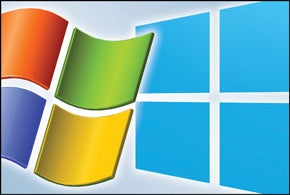Nine Essential Facts to Consider About Windows XP Migrations
 Status of Windows XP Migration
Status of Windows XP Migration
A large number of respondents report that the migration from Windows XP is still under way. In process of migration: 47%, Completed migration: 37%, Still on Windows XP: 16%
 When Migration Is Scheduled to Be Completed
When Migration Is Scheduled to Be Completed
The Windows XP migration issue will extend well beyond April 8. No target date for completion: 31%, More than 1 year: 10%, Less than 1 year: 59%
 Top Reasons Migration Has Not Yet Occurred
Top Reasons Migration Has Not Yet Occurred
After application compatibility, the next biggest issues relate to time and process. Applications don’t work with Windows 7 or Windows 8: 41%, Distracted by other IT initiatives: 38%, User training and support for new interface: 37%, Loss of user productivity during migration: 27%
 Top Methods for Moving to Windows 7 or Windows 8
Top Methods for Moving to Windows 7 or Windows 8
There are many paths to an OS upgrade. Purchase new hardware with upgraded OS: 30%, Even mix of hardware purchase and reimaging software: 21%, Mostly purchased new hardware and some reimaging of hardware: 17%, Mostly reimaging existing hardware and some new hardware: 17%
 Process Used for Reimaging Systems
Process Used for Reimaging Systems
The vast majority of respondents would like to keep the process as simple as possible. Clean install: 80%, In-place upgrade: 12%, Both clean install and in-place upgrade: 8%
 Organizations Deploying Both Windows 7 and Windows 8
Organizations Deploying Both Windows 7 and Windows 8
Windows 7 appears to be the preferred upgrade path. Deploying both Windows 7 and Windows 8: 86%, Deploying only Windows 8: 14%
 Use of Windows 8
Use of Windows 8
Not in use: 46%, In use by internal IT: 36%, In use by the business: 16%
 Total Project Migration Savings
Total Project Migration Savings
For organizations with 1,000 PCs, the security, compliance, rationalization and productivity benefits can add up. $336,000
 Reliance on Outside Help for Migration
Reliance on Outside Help for Migration
The channel needs to do a better job promoting its Windows XP migration skills because only a small percentage rely on outside help. Do not go outside: 84%, Do go outside: 16%

